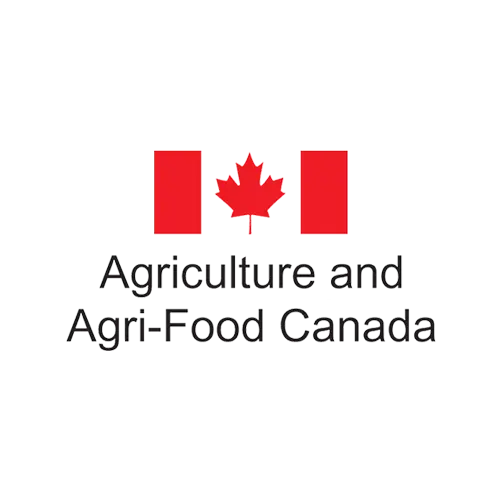The ultimate tool for near-infrared spectroscopy
The NIRvascan™ is the world’s first portable, battery-operated smart spectrometer. It covers many field applications and its configuration is optimized for diffuse reflectance, transmission and fiber input detection for a spectral range between 900nm and 1700nm, 1350nm to 2150nm or 1600nm to 2400nm
The Nirvascan Reflective models support Opaque solids and powders, such as:
 Recycle
Recycle Agricultural
Agricultural Fish Quality
Fish Quality Textile
Textile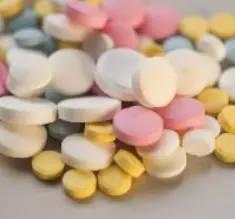 Drugs
Drugs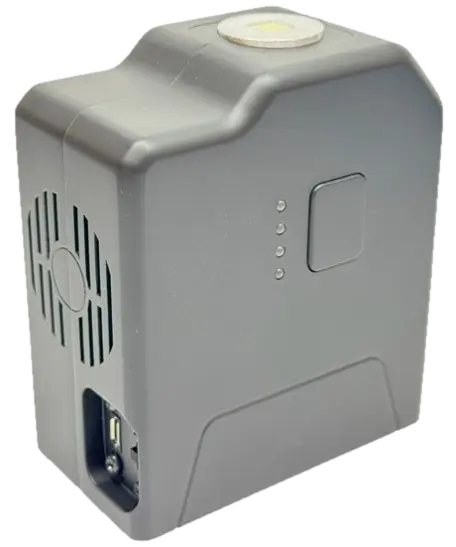
Nirvascan R14 Model
Wavelength Range: 1600-2400 nm
Optical Resolution: Typ. 12 nm
Wavelength Accuracy: Typ. ±1 nm
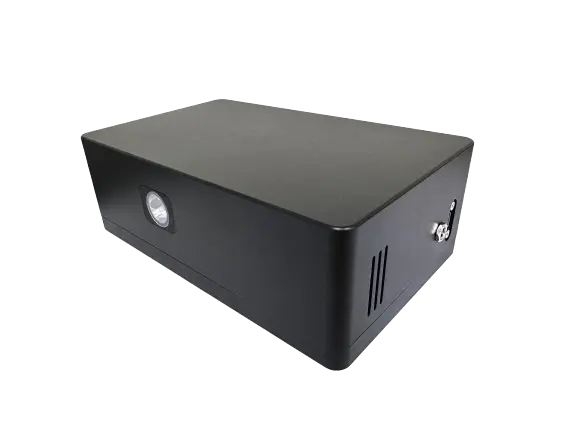
Nirvascan R16 Model
Wavelength Range: 900-2400 nm
Optical Resolution: Typ. 10 nm ~ 12 nm
Wavelength Accuracy: Typ. ±1 nm

Nirvascan G1 Model
Wavelength Range: 900-1700 nm
Optical Resolution: Typ. 10 nm
Wavelength Accuracy: Typ. ±1 nm

Nirvascan R12 Model
Wavelength Range: 1350-2150 nm
Optical Resolution: Typ. 12 nm
Wavelength Accuracy: Typ. ±1 nm
The Nirvascan Transmissive models support transparent liquid, slurry or opaque liquid, such as:
 Human Milk
Human Milk Honey
Honey Milk
Milk Olive Oil
Olive Oil Chemical Liquid
Chemical Liquid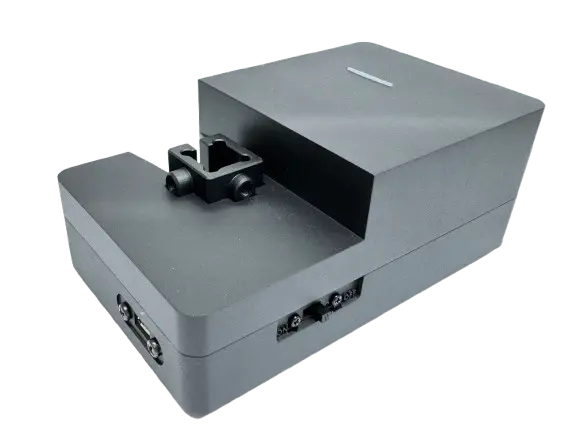
Nirvascan T12 Model
Wavelength Range: 1350-2150 nm
Optical Resolution: Typ. 12 nm
Wavelength Accuracy: Typ. ±1 nm
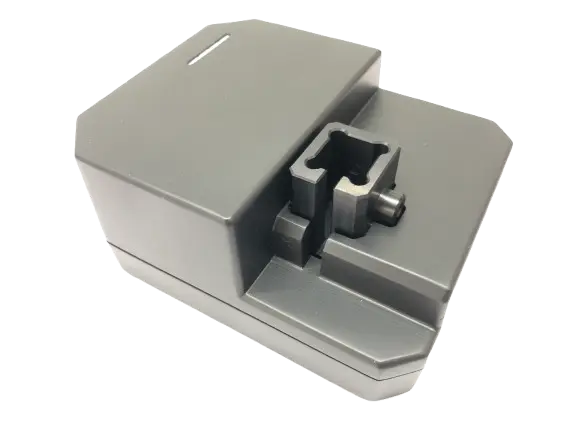
Nirvascan T2 Model
Wavelength Range: 900-1700 nm
Optical Resolution: Typ. 10 nm
Wavelength Accuracy: Typ. ±1 nm

Nirvascan T14 Model
Wavelength Range: 1600-2400 nm
Optical Resolution: Typ. 12 nm
Wavelength Accuracy: Typ. ±1 nm
The Nirvascan Fiber Optic models are a sampling module for a variety of applications, such as:
 Fruits
Fruits Film thickness
Film thickness Silage
Silage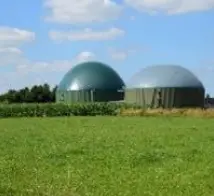 Manure
Manure Petrochemical
Petrochemical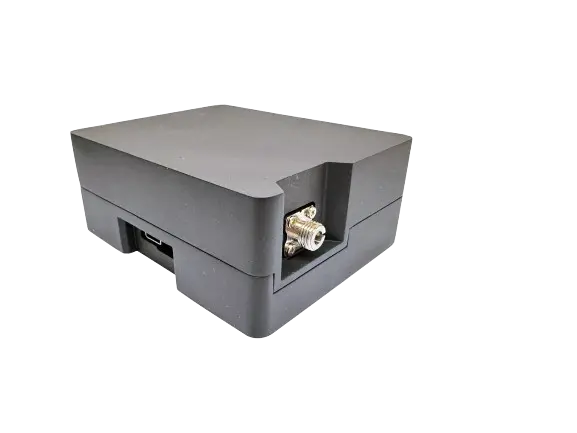
Nirvascan F12 Model
Wavelength Range: 1350-2150 nm
Optical Resolution: Typ. 12 nm
Wavelength Accuracy: Typ. ±1 nm
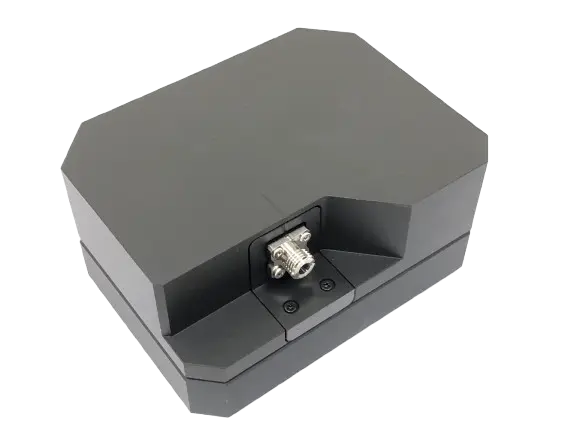
Nirvascan F2 Model
Wavelength Range: 900-1700 nm
Optical Resolution: Typ. 10 nm
Wavelength Accuracy: Typ. ±1 nm

Nirvascan F14 Model
Wavelength Range: 1600-2400 nm
Optical Resolution: Typ. 12 nm
Wavelength Accuracy: Typ. ±1 nm
Understanding NIRvascan's different Applications
The NIR region of the spectrum mainly contains overtones and combination bands that are mainly attributed to hydrogen vibrations for bonds such as OH, CH and NH. Absorption of NIR radiation by these bonds causes molecules to rotate and vibrate. Pharmaceutical drugs and excipients give different NIR transmission spectra. NIR spectra are related to the ingredients of the tablet parameters. A change in the content of the active component changes the NIR spectra, and different reflectance and transmission spectra are obtained. By calibrating the spectra against samples of known values or measuring the tablet content with high accuracy techniques such as HPLC, a calibration curve can be obtained which relates the magnitude of the absorption peaks to the concentration of the active ingredients. This method can be used in content uniformity testing, which ensures the concentration of the Active pharmaceutical Ingredient (API) from tablet to tablet across an entire batch. Use our bigdatachem.com matching server that contains thousands of active substances and excipients used in the pharmaceutical industry.
Near IR spectroscopy in the range of 900 to 1663 nm can be used to identify cocaine, heroin, oxycodone, diazepam and synthetic cannabinoids. This technique can be used by police officers, patrol agents, border officers, etc., to confiscate illegal substances. Accurate spectral models have been developed by scientists for each substance, and a miniature NIR spectrometer measures the diffuse reflection from the samples. The samples can be inside a plastic bag, which does not interfere with the measurements. Absorption spectrum can be calculated from the measurement of diffuse reflection, and after mathematical treatment, can be compared to library spectra to identify a substance. Mostly, the narcotic substances are a mixture of active substances (such as cocaine, heroin, etc.) and cutting agents (such as caffeine, paracetamol, etc.), and this makes the identification of these powder mixtures challenging. The shape of the narcotics could also vary from powders to tablets or lumps and NOR spectroscopy is very much capable of handling it.
Plastics have become an important part of today’s life and have found applications ranging from reducing weight in commercial airplanes to preserving food in refrigerators. They have also become a big source of trash, as manifested by the big plastic garbage lump in the northern Pacific Ocean. The recycling of plastics is therefore very important to be able to reuse these polymers, which have been formed using low-temperature injection moulding. At first, the sorting of plastics for recycling is done manually by referring to their recycling code, but near-infrared spectroscopy can make this process more efficient and less expensive. Reflection spectra in the 900-1700 nm range contain the spectral signature of each type of polymer. Chemometrics techniques can be used to analyze the near-IR spectra and sort different types of plastics. This has already been accomplished, and plastics of the same type which were collected from different recycling bins have been identified successfully.
Near-IR spectroscopic techniques are very useful in evaluating the content of food. This is because 99% of food is made of proteins, carbohydrates, fats and water. NIR provides a means for measuring these components in food. The NIR region contains the absorbance bands mainly due to three chemical bonds which are C-H (as in fats and oils, hydrocarbons), O-H (as in water and alcohol) and N-H (as in Proteins). By measuring the absorption of these chemical bonds, which are due to overtones of vibration of molecules, one can quantify the amount of the ingredients. Usually, a calibration procedure is needed to relate the absorption spectra to a few samples with known and varying amounts of ingredients. A mathematical relation is then derived, which correlates the depth of absorption peaks to the concentration of ingredients. The NIR technique can be applied for food quality inspection in raw and processed meat, dairy products, baked goods, confectionery, grains, oil seeds and beverages.
Nitrate occurs naturally in the environment, and humans can be exposed to it through the consumption of vegetables. Nitrate is present in varying concentrations in all vegetables and is part of the nitrogen cycle. Nitrate can be reduced to nitrite by microbes. Nitrite, in turn, can form carcinogenic compounds. Near-IR spectroscopy can be used to find the concentration of nitrate in vegetables. The NIR method is non-destructive and fast. NIR has been an important tool for the qualitative and quantitative analyses of internal properties of fruits and vegetables. In lettuce, the nitrate absorption bands between 700-960 nm have been used to quantify the concentration of nitrate. Hyper-spectral methods can be used to find the distribution of nitrate in a vegetable leaf.
Identification of the percentage of cotton in a colored cotton-Polyester (PET) fabric is very much in demand in the textile industry. This is needed for quality inspection and custom checkups. The reflectance spectra from fabrics in the NIR range 1100-2500nm contain spectral signatures which can reveal the fabric content. The reflectance spectra are measured using a hand-held NIR spectrometer and are then converted into absorbance vs. wavelength plots. Varying content of cotton in a cotton-polyester blend can be identified spectrally, and a calibration method can be developed. The primary validation technique for the determination of cotton content is dissolving the cotton in sulfuric acid and measuring the remaining polyester. The NIR method can be validated by comparing against the results of the acid burnout method. The range between 1400-1700 nm in particular contains many spectral features for the identification of cotton content in a blend. An accuracy of +/- 3% can be expected from the NIR measurement.
Soil deterioration and degradation have significantly increased in the last decade. Efficient and systematic monitoring of soil is becoming urgently needed. Near Infrared Reflection Spectroscopy ( NIRS) in the 780-2500 nm range is a rapid, non-destructive, cost-effective and efficient method to monitor the chemical, physical (such as particle size and porosity) and biological properties (such as microbial biomass) of the soil. The reflection spectra are converted into absorbances, which give information about vibrations in C-H, O-H and N-H bonds in the soil. These absorbances are relatively weak because they result from combinations or overtones. Although a qualitative assessment of the soil properties is possible by visually inspecting the soil and its spectra. The quantitative assessment can be done by using only statistical methods such as chemometrics. The emergence of hand-held near-IR spectrometers could provide a large amount of spatial data for soil monitoring conditions.
Preserving artwork, especially paintings, is an important challenge since the older the painting gets, the possibility of its deterioration. NIR reflection spectroscopy can be used to identify paint pigments, detect underlying drawings, identify counterfeits and recognize organic material in the paintings. A spectrophotometer collects the reflection spectra from a painting, and by converting reflection measurements to absorption vs. wavelength plots, you can identify paint pigments and also detect forgeries. The underlying painting is also important to reveal the intention of the creator of the artwork. The non-destructive NIR method preserves the works of art and reveals all the required information.
NIR spectroscopy can provide information about the structural and physical properties of biological samples. Measurements of NIR trans-reflectance spectra in the 750-2500 nm range from suspended bacterial solutions reveal that there are specific absorption bands, particularly at around 1440 nm. This band is mostly associated with water absorption and the O-H bond, but by measuring trans-reflectance of liquid samples, the effects of water absorption can be reduced. This leads to a more effective bacterial detection and differentiation. The use of chemometrics also helps in discriminating and classifying bacterial species. NIR measurements of bacteria suspended in liquids provide a non-destructive method to identify microbes isolated from food.
NIR spectroscopy can be used to detect the presence of fungi, which can cause diseases. One common form of fungal disease for fruits and vegetables is Botrytis cinerea, or gray mold. This fungus will cause the fruit and vegetables to rot and essentially reduce their overall quality. Measurement of spectral reflectance and absorbance of fungi will allow early identification of rotting produce. Fungi leave spectral signatures which can be detected using infrared spectroscopy. Two regions of interest are Near IR (760-1000 nm) and SWIR (1010-1775 nm). A handheld NIR spectrometer can detect the spectral signatures of gray mold. The technique can also be used in the identification of plant species and the estimation of plant yield.

The NIRvascan Product uses an IOS App and Android APK for a quick connection via Bluetooth* to take a measurement that can be saved into your mobile device and sent later to your PC
* Not all model has Bluetooth access, please contact us to have more information.
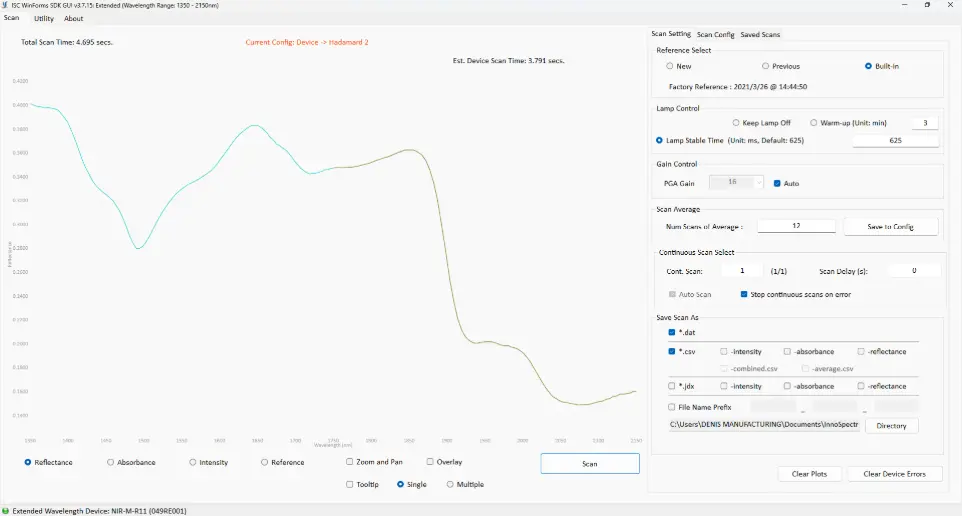
The NIRvascan can also be used on a PC with a Micro USB Cable. You can take measurements, do your own reference and more. The PC software lets you do more than the mobile App itself, and comes free with the Spectrometer.

Technotes and Webinar
We have Multiple Tech notes and a webinar that can help you understand how our NIRvascan works, what we have previously measured, research we have made with the help of our customer, and other interesting information.
For more Information, please contact us below
SOME OF OUR VALUED CLIENTS & PARTNERS



